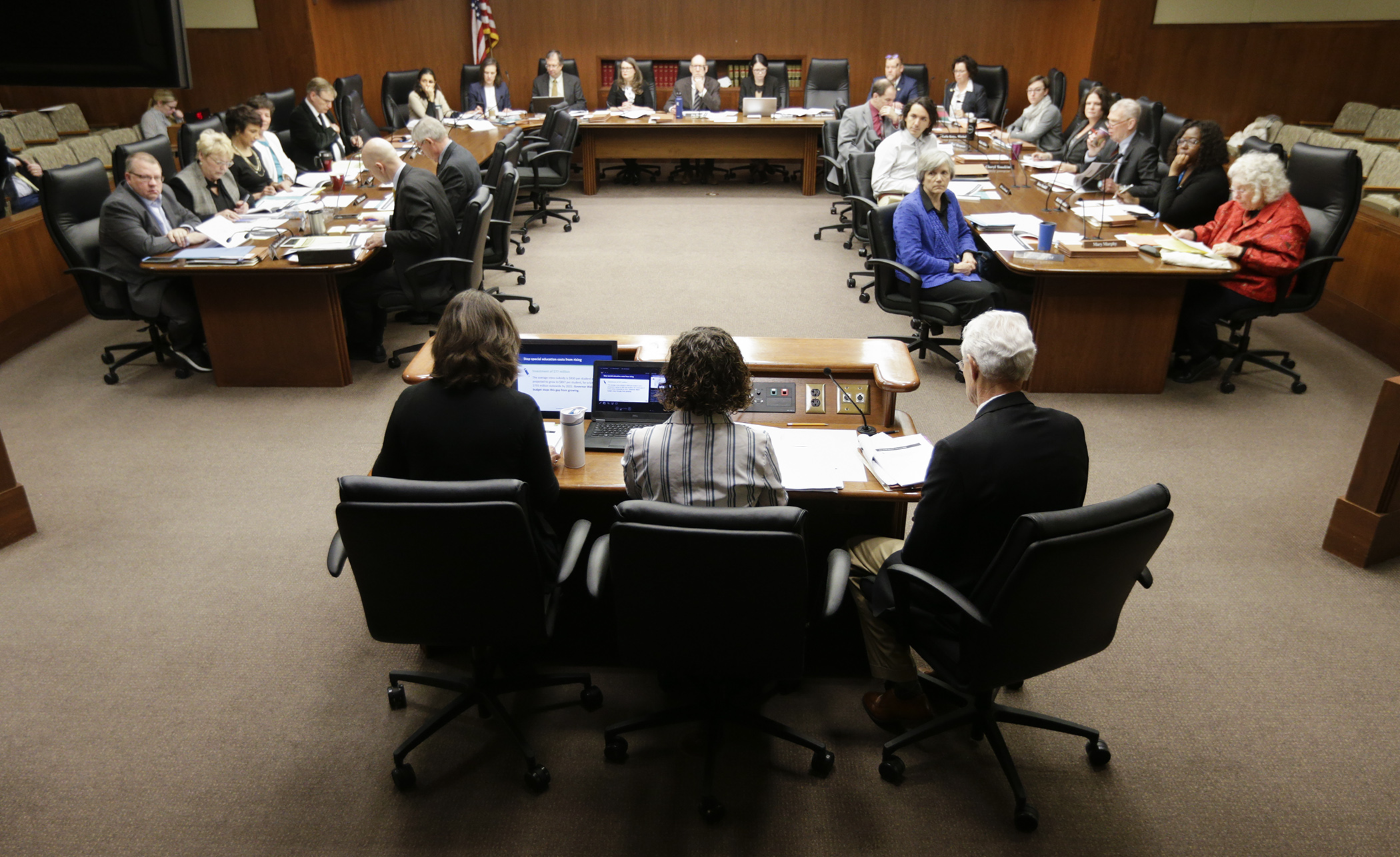Governor seeks additional $733 million for E-12 education funding

The E-12 education budget is the largest expenditure in Gov. Tim Walz’s “Budget for One Minnesota” proposal, totaling 41.1 percent of the $49.5 billion recommendation.
The House Education Finance Division received a high-level overview of the education portion of that proposal Wednesday from Education Commissioner Mary Cathryn Ricker.
In total, the proposal would invest $733 million in additional pre-K through grade 12 education funding over the next two years with a goal of stabilizing education funding, making investments in data collection and analytics, and helping address racial and socioeconomic achievement gaps.
The bulk of that funding, $523 million, would be used to increase the general education basic formula by 3 percent, or $189 per student in Fiscal Year 2020, and 2 percent, or an additional $130 per student in Fiscal Year 2021. The general funding formula is the biggest source of state aid to schools and offers districts the most flexibility and local control.
The gap between school districts' special education costs, and the state and federal funding they receive, is projected to hit $793 million statewide by Fiscal Year 2021. The budget would appropriate $77 million to prevent the cross subsidy from increasing.
“By freezing the cross subsidy and keeping it from growing that means an investment in general education revenue—our proposal of 3 percent and 2 percent—can really mean 3 percent and 2 percent,” Ricker said, “which means we have preserved the buying power of that general education revenue investment.”
Rep. Ron Kresha (R-Little Falls) asked if Walz had indicated any appropriations that were aspirational and could be reduced or eliminated depending on the February budget forecast, scheduled to be released Thursday.
Ricker indicated that Walz intends for the proposal to be passed as a comprehensive package, which she supports.
Other components of the E-12 proposal include:
- $59 million to extend voluntary prekindergarten programming for 4,000 students;
- $26 million for school safety;
- $8 million for Minnesota’s Regional Centers of Excellence;
- $3.6 million to stabilize and equalize support for American Indian Tribal Schools;
- $2 million annually for full-service community schools;
- $2 million annually for grants to support teachers of color and American Indian teachers;
- $1.8 million annually for student-teacher grants;
- $1.6 million to improve data collection technology; and
- $1 million annually for schools to support homeless students.
In additional to fiscal appropriations, the proposal would make several policy changes, including:
- granting school boards authority to extend existing, unchanged operating referendums;
- modifying laws regarding the American Indian teacher grant program; and
- creating a task force to address education-related funding issues.
Rep. Julie Sandstede (DFL-Hibbing), applauded the recommendation to create a school finance task force to address the state’s current funding formula.
“I think we’re at a time we really need to look at some monumental changes, that we may have to do incrementally,” she said.
Related Articles
Search Session Daily
Advanced Search OptionsPriority Dailies
Ways and Means Committee OKs proposed $512 million supplemental budget on party-line vote
By Mike Cook Meeting more needs or fiscal irresponsibility is one way to sum up the differences among the two parties on a supplemental spending package a year after a $72 billion state budg...
Meeting more needs or fiscal irresponsibility is one way to sum up the differences among the two parties on a supplemental spending package a year after a $72 billion state budg...
Minnesota’s projected budget surplus balloons to $3.7 billion, but fiscal pressure still looms
By Rob Hubbard Just as Minnesota has experienced a warmer winter than usual, so has the state’s budget outlook warmed over the past few months.
On Thursday, Minnesota Management and Budget...
Just as Minnesota has experienced a warmer winter than usual, so has the state’s budget outlook warmed over the past few months.
On Thursday, Minnesota Management and Budget...